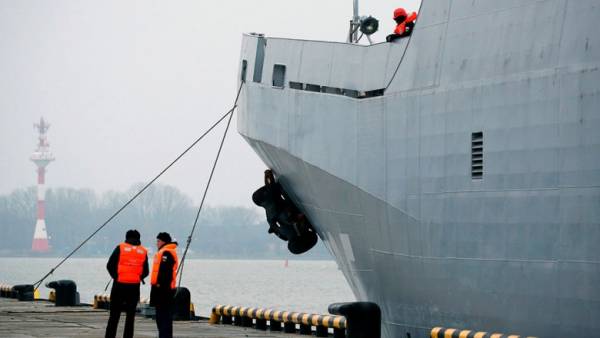Misgivings
Will it be possible to solve the main problem of national defense.

One of the key appointments in the new government will be the advent of the post of Deputy Prime Minister, who oversees the military-industrial complex Yuri Borisov, who until recently held the post of Deputy Minister of defense of Russia. What are the challenges facing the new curator of the defense industry — in the material of the portal iz.ru.
To remain without a Navy
The execution of the state armaments programme 2018-2027 year has not really started, and even contracts to be carried out in the framework, details has not been developed and submitted for the signature, but some results can already predict. If everything remains “as now,” by 2030, Russia in fact will lose fleet. No, of course, of the armed forces called the Navy of the Russian Federation will remain, but the maximum that he will be able, is to protect its own bases and separate parts of the coast with a rare demo stock beyond the surrounding seas.
Moreover, doubt may be raised and the ability of the fleet to perform the important task of ensuring the combat stability of the marine component of the strategic nuclear forces.
This is probably the main problem of the new program, to get her inheritance from ending GPV-2020, the implementation of which was burdened with a political crisis that led to the rupture of historically Russian-Ukrainian cooperation, including in military shipbuilding, and the legacy of the General post-Soviet crisis of the domestic industry.
The results of the GPV-2020 in the shipbuilding parts do not inspire any optimism on this account. More or less satisfactory score, you can only put the construction of submarines, primarily of the strategic submarines of project 955 “Borey” and multipurpose nuclear submarine of project 885 “Ash”. In both cases, the timing of delivery of the series has shifted to the right on the “Borei” approximately one year “Ashes” — at 2-3.
Without disruption program was implemented the construction of six diesel submarines of project 636 for the black sea fleet and the construction of the same series for the Pacific fleet, however, by itself this program is a palliative, appeared to light because of problems with the construction of more modern submarines of project 677 and design of diesel submarines of the new generation.
In the field of military ship repair can also note the good results of the program maintain readiness of strategic missile submarines of the Soviet construction projects 667BDRM and 667BDR, which ensured the preservation of the marine component of the strategic nuclear forces as a whole and allows us to speak about prospects of its further development.

All other programs of military shipbuilding was broken. Of 35-40 ships class Corvette/frigate, which was to enter into the fleet until 2020, currently transferred to the client only eight units, and by the end of 2020 their will be a maximum of 14. Completely disrupted plans for the upgrade of the landing force fleet of six scheduled BDK project 11711 fleet has not yet received any, and the maximum will receive two units, and the construction of domestic amphibious assault ships instead of not received in connection with the Ukrainian crisis “Mistral” moved to the new program. At the same time, considering the burden posed by remaining in the ranks of Soviet-built ships in the “Syrian Express”, this failure is fraught with the rapid decline of the already small amphibious fleet in the coming years.
Plans for the construction of major combat units — destroyers of the project Leader is also shelved, and unclear situation with the possible construction of an aircraft carrier.Without repair
How extremely unsatisfactory it is possible to evaluate the results of the ending of GLS in the modernization of the combat units in Soviet times. With a delay of several years started the repair of the only Russian aircraft carrier “Admiral Kuznetsov”, the state of the domestic shipbuilding industry raises fears about serious delays, like it happened with the atomic missile cruiser “Admiral Nakhimov”, which was originally supposed to return to the fleet in 2012, but in the end in fact was launched only in 2015 and a possible date of completion of repairs left to the right for 2021.

In fact, of the major ships of the fleet in this decade, the average repair and modernization successfully passed only the missile cruiser “Marshal Ustinov”, the original planned three-year process dragged on for five years, and upgrades, except for electronic equipment, has been of limited use — ASM P-500 “Basalt” was replaced with the improved (but also of Soviet design) P-1000 “Volcano”, while other weapons of the cruiser remained the same.
For the next decade shifted and the program of modernization, large anti-submarine ships of project 1155, and plans at least partial recovery of groups of destroyers project 956 of the military office in the end refused in principle.
Similar problems can be noted in the program of modernization of multi-purpose submarines: of the six submarines of project 971, which was supposed to take place through the repair and modernization under the new SAP, this process has not yet been completed on any of the boats and nuclear submarines — the carriers of cruise missiles of the project 949A “Antey”. Thus the improvement of the “Ante” pinned great hopes — after the upgrade these boats will carry 72 cruise missile complexes “Onyx”/”Caliber”, which dramatically increase their capabilities and broaden the range of tasks compared to the original Arsenal of the 24 heavy anti-ship missiles P-700 complex “Granit”.